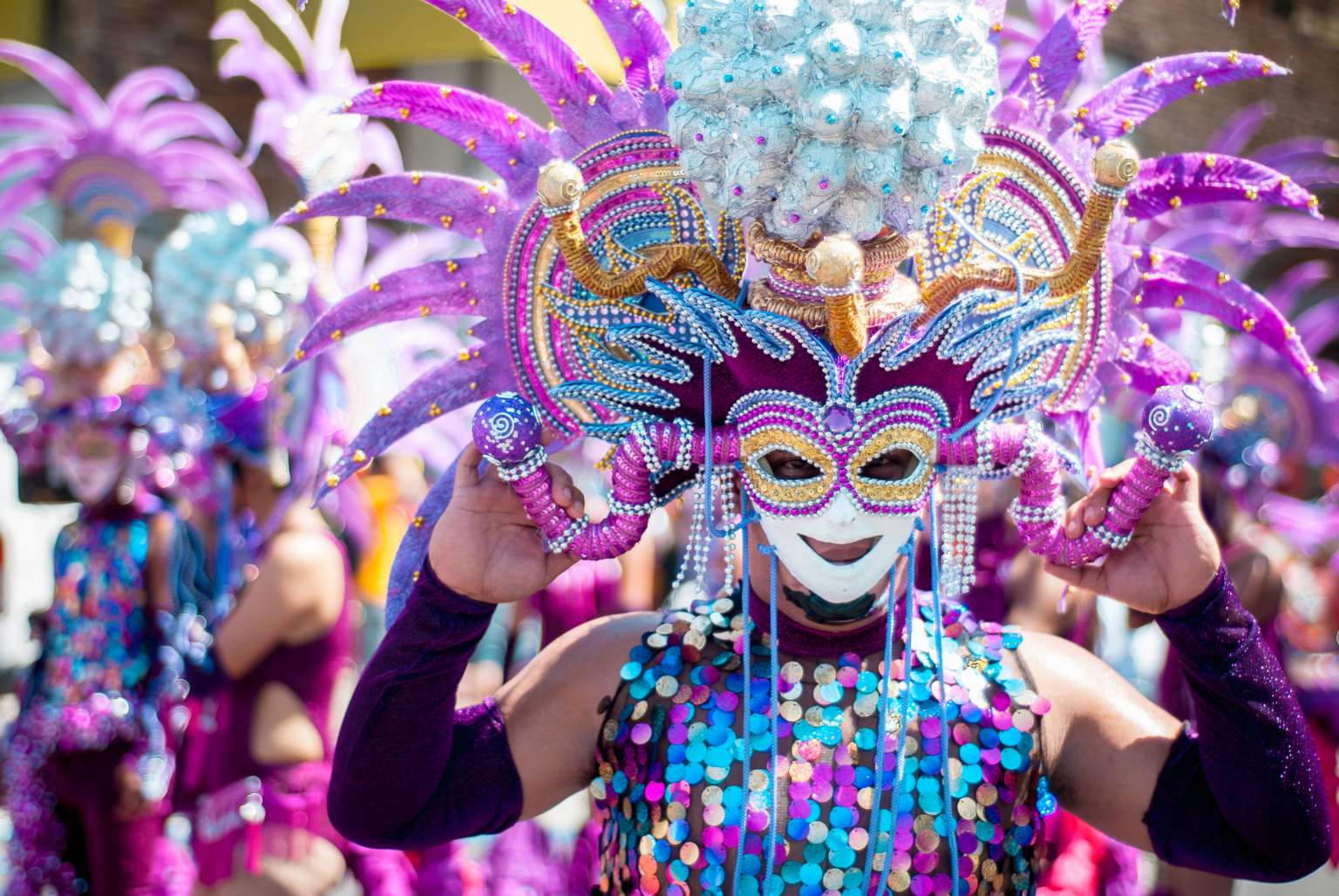Gallery
Photos from events, contest for the best costume, videos from master classes.
 |  |
 |  |
 |  |
 |  |
 |  |
 |  |
Laborde verifies that the colors of Mardi Gras can be traced to the first Rex parade in 1872. He cites newspapers of the day that included a proclamation from the King of the Carnival deigning that balconies should be draped in purple, green and gold. The Meaning Behind the Colors. The three official colors of Mardi Gras each have their own significance: Purple represents justice. Green represents faith. Gold represents power. There are a few different theories about the exact origins of how these colors came to represent Mardi Gras. Here are some of the most popular explanations: What do the Mardi Gras colors mean? LiliGraphie/Getty Images. The Mardi Gras colors weren’t given an official meaning until 1892, when the Rex parade had the theme “Symbolism of Colors.” Rex, one of the oldest Mardi Gras krewes, has been participating in parades since 1872 and established purple, gold and green as the iconic Mardi Gras colors. Louisiana is the only state in which The Origins of Mardi Gras Colors. The history of Mardi Gras colors dates back to the 17th century, when the French and Spanish monarchies ruled over the Americas. During this time, the colors of the French and Spanish royal families became synonymous with the Mardi Gras celebrations. The French monarchy, in particular, played a significant role The colors of Mardi Gras – purple, green, and gold – represent the Trinity, with purple symbolizing royalty, green representing faith, and gold representing purity. Q: Why are the colors of Mardi Gras so important? The colors of Mardi Gras are important because they symbolize the values and ideals of the celebration, including community Where did the Mardi Gras colors originate? The Mardi Gras colors have roots in European courtly traditions and the Catholic Church. Purple was associated with royalty and spiritual devotion, green with hope and renewal, and gold with wealth and abundance. Origins of the Mardi Gras Colors The colors of Mardi Gras – purple, green, and gold, can be found as early as 1872 at a carnival organized by the company Rex for a Russian aristocrat’s arrival. Rex has held parades in New Orleans for 148 years and continues to be its most prominent parade organizer to date. The colors have become so intertwined with Mardi Gras that their mere presence can evoke the spirit of the celebration, even in places far from New Orleans. Cultural Evolution and Global Influence. The impact of these Mardi Gras colors has spread well beyond their initial purpose, inspiring artists, designers, and cultural festivities globally. Rex, the King of Carnival, selected the Mardi Gras colors in 1872 to honor the visiting Russian Grand Duke Alexis Alexandrovich Romanoff, whose house colors were purple, green and gold. The 1892 Rex Parade theme "Symbolism of Colors" affirmed the Mardi Gras colors meaning. Purple stands for justice, green for faith, and gold for power. 4: When was the first Mardi Gras? The first Mardi Gras parade was held in New Orleans on Feb. 24, 1857 by the Krewe of Comus. They began the tradition of presenting a parade with floats and following it with a ball for the krewe and their guests. Mardi Gras Dates. 5: What is the significance of the Mardi Gras colors, and where did they come from? The colors of Mardi Gras, which are purple, green, and gold, have a specific symbolism and origin. They were established in the late 19th century by the Krewe of Rex, one of the oldest and most prominent parade organizations in New Orleans. Mardi Gras celebrations are rooted in early Roman times, when participants preceded a similar Lenten season of fasting with a period of feasting and celebration.While the most popular Mardi Gras festivities now occur closer to Mardi Gras itself, Christians traditionally began their celebration season, known as Carnival, 12 days after Christmas Mardi Gras is a festive day celebrated in France on Shrove Tuesday (the Tuesday before Ash Wednesday), which marks the close of the pre-Lenten season. The French name Mardi Gras means Fat Tuesday, from the custom of using all the fats in the home before Lent. • The Colors – Purple, Green, and Gold: These official Mardi Gras colors were chosen in 1872. Purple represents justice, green stands for faith, and gold symbolizes power. • Masks and Costumes: Mask-wearing is a big deal in New Orleans’ Mardi Gras, giving people the chance to step into a new identity for the day. Understanding these colors unveils a deeper layer of meaning within this beloved celebration, enriching our appreciation for its cultural significance. The Trinity of Colors: Purple, Green, and Gold. The iconic trio of purple, green, and gold, known as the “Mardi Gras colors,” are more than just a visually striking combination. The Mardi Gras colors originated in the 18th century, inspired by the royal colors of the French and Spanish, who ruled Louisiana at the time. Why are Mardi Gras colors so important? The Mardi Gras colors are deeply ingrained in the cultural identity of New Orleans. Mardi Gras Trivia. Did you know these fun facts? Mardi Gras, meaning “Fat Tuesday” in French, is a day to indulge in rich foods before the fasting of Lent. New Orleans bursts into a kaleidoscope of parades, costumes, and beads during its world-famous Mardi Gras celebrations. Mardi Gras, also known as Fat Tuesday, originated in medieval Europe and arrived in North America with French explorers in 1699. It's celebrated with unique traditions, vibrant colors, and delicious food, making it a global phenomenon. The traditional Mardi Gras colors of purple, green, and gold represent justice, faith, and power. Alexandrovich of the Krewe of Rex is credited with establishing purple, gold and green as the official colors of Mardi Gras, stemming from the colors of the duke’s royal house.
Articles and news, personal stories, interviews with experts.
Photos from events, contest for the best costume, videos from master classes.
 |  |
 |  |
 |  |
 |  |
 |  |
 |  |